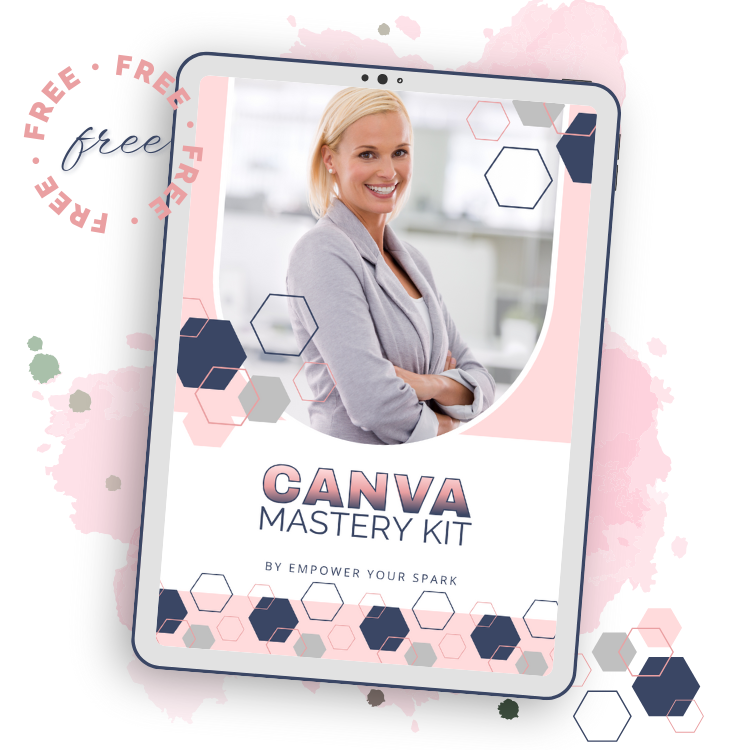Simplified Strategies & Support For
female entrepreneurs
~ Create, Grow & Thrive with Confidence ~
Hey there! You might find some affiliate links in this blog. If you decide to make a purchase through one, I may earn a small commission. It helps keep this space running, and I only share things I personally find valuable. Thanks for being here!
Blog Posts

How to Monetize a Blog Without Ads in 2025
Relying on ads to make money from your blog can be frustrating—low payouts, unpredictable income, and a cluttered user experience. But here’s the good news: You don’t need ads to make money blogging! Many successful bloggers earn a full-time income through alternative monetization strategies.
In this guide, we’ll explore 10 powerful ways to monetize your blog without ads. Whether you're just starting out or looking to scale your income, these methods can help you build a sustainable, profitable blog while keeping your content clean and reader-friendly.
10 Ways to Monetize a Blog Without Ads

Offer Affiliate Marketing Products
➡️ Recommend products you love and earn commissions
Affiliate marketing allows you to earn a commission for recommending products or services related to your blog niche. Instead of cluttering your site with ads, you can seamlessly integrate affiliate links into your content, offering valuable recommendations to your readers while earning passive income.
➡️ Best affiliate programs for bloggers (Amazon Associates, ShareASale, Impact, etc.)
There are many affiliate programs available, but the key is choosing ones that align with your audience's interests. Popular programs like Amazon Associates, ShareASale, and Impact offer a variety of products across different industries, making it easier to find relevant promotions for your niche.
➡️ How to create high-converting affiliate content
Simply adding affiliate links won’t guarantee sales. To increase conversions, create in-depth product reviews, comparison articles, and tutorials that demonstrate the value of the product. Use storytelling and personal experience to build trust and encourage purchases.
Offer Coaching or Consulting Services
➡️ How to leverage your expertise to offer coaching
If you have specialized knowledge in your niche, coaching or consulting can be a lucrative option. People are willing to pay for personalized guidance, whether it’s business coaching, mindset coaching, or even blogging mentorship.
➡️ Setting up coaching packages and pricing
To attract clients, create different coaching packages tailored to various needs. Offer one-time strategy calls, ongoing mentorship programs, or VIP day sessions. Price your services based on value and experience, ensuring it reflects the transformation you provide.
➡️ Using your blog to attract and convert clients
Your blog serves as your portfolio. Publish high-quality content showcasing your expertise and success stories. Add a dedicated "Work With Me" page, client testimonials, and clear calls to action to encourage bookings.
Sell Digital Products
➡️ Why digital products are profitable (low overhead, high margins)
Selling digital products is one of the most scalable ways to make money from a blog. Unlike physical products, digital products don’t require inventory, shipping, or ongoing production costs. Once created, they can be sold an unlimited number of times with little additional effort.
➡️ Best digital products to sell (e-books, printables, templates, courses)
There are endless possibilities for digital products. Bloggers often sell e-books, printable planners, Canva templates, Notion dashboards, and even full online courses. The best products solve a problem your audience faces, making them highly valuable.
➡️ Tips for creating and marketing your digital products
To successfully sell digital products, focus on high-quality content, compelling sales pages, and strategic marketing. Use social media, email lists, and SEO-optimized blog posts to drive traffic to your products. Offering limited-time discounts and bonuses can also boost sales.

Offer Freelance Writing or Services
➡️ Use your blog as a portfolio
Your blog can serve as a showcase of your writing, design, or marketing skills. When potential clients see high-quality content on your blog, they’re more likely to hire you for freelance projects.
➡️ Best freelance services to offer (writing, social media management, SEO)
Common freelance services for bloggers include content writing, SEO consulting, social media management, and Pinterest marketing. Identify your strengths and package your skills into services that businesses are willing to pay for.
➡️ Where to find clients (Upwork, LinkedIn, networking)
Your blog is the perfect showcase of your expertise. Many bloggers monetize by offering freelance writing, social media management, SEO consulting, or virtual assistant services. By positioning your blog as a portfolio, you can attract clients willing to pay for your skills.
Launch an Online Course
➡️ How to turn your expertise into a profitable course
If you’re knowledgeable about a specific topic, turning it into an online course can be highly profitable. People are willing to pay for structured, step-by-step learning experiences.
➡️ Choosing a platform (Teachable, Podia, Thinkific)
Platforms like Teachable, Podia, and Thinkific make course creation easy. They handle payments, student management, and content delivery, so you can focus on creating valuable lessons.
➡️ Marketing strategies for selling courses
Pre-selling, email marketing, and launching with bonuses can boost course sales. Consider hosting free webinars or offering mini-courses as a lead-in to your main offer.
Create a Paid Membership or Subscription
➡️ How memberships create recurring revenue
Unlike one-time sales, memberships provide steady, predictable income. Subscribers pay a recurring fee for exclusive content, private communities, or premium resources, allowing you to scale income over time.
➡️ Platforms for hosting memberships (Patreon, Circle, Kajabi)
You don’t need to build a membership from scratch—platforms like Patreon, Circle, and Kajabi make it easy to offer paid memberships with secure access to premium content. Choose the best platform based on your community’s needs.
➡️ What to include in a membership (exclusive content, community, live sessions)
Successful memberships provide ongoing value. Offer exclusive tutorials, behind-the-scenes insights, group coaching, and private forums where members can connect and ask questions. The more value you provide, the higher your retention rate.

Host Paid Webinars or Workshops
➡️ Why live sessions are effective for engagement and income
Webinars allow real-time interaction, making them great for teaching and selling. A well-structured webinar provides value while subtly leading into a paid offer.
➡️ Best platforms to host webinars (Zoom, WebinarJam, Demio)
Platforms like Zoom, WebinarJam, and Demio offer great features for hosting live sessions, including recording, Q&A sections, and integration with email marketing tools.
➡️ Pricing strategies for workshops
Pricing should reflect the value provided. Charge anywhere from $20 to $200 depending on the depth of content, duration, and exclusivity.
Sell Physical Products or Merch
➡️ Best physical products for bloggers (books, planners, merchandise)
Selling physical products is a great way to diversify your income. Many bloggers create and sell branded merchandise like t-shirts, mugs, and stickers. Others leverage their expertise by publishing books, workbooks, or planners that align with their niche. If you have a blog about productivity, for example, a branded planner could be a perfect fit.
➡️ Print-on-demand options (Teespring, Printful, Redbubble)
One of the easiest ways to sell physical products without dealing with inventory is through print-on-demand services. Platforms like Teespring, Printful, and Redbubble allow you to design products that are only produced and shipped when someone makes a purchase. This eliminates upfront costs and the need for storage.
➡️ How to market and sell effectively
To successfully sell physical products, integrate them naturally into your content. Write blog posts showcasing how they can benefit your audience, use email marketing to announce new products, and promote them on social media. High-quality product images and testimonials from happy customers can also boost sales.
Offer Sponsored Content & Brand Partnerships
➡️ How to attract brand deals
Brands are always looking for bloggers who can authentically promote their products or services. If you have an engaged audience, you can pitch yourself to brands or sign up for influencer networks like AspireIQ or Influence.co. Having a well-organized media kit showcasing your audience demographics and engagement rates can help secure partnerships.
➡️ What to charge for sponsored blog posts
Your pricing should reflect the value you bring to the brand. Factors like your blog traffic, niche authority, and audience engagement all play a role in determining your rates. Sponsored blog posts can range from $100 to $5,000+ depending on your reach. Tools like Social Bluebook can help you calculate fair rates.
➡️ Best practices for authentic collaborations
To maintain trust with your audience, only partner with brands that align with your values and blog niche. Be transparent about sponsored content by using proper disclosures (such as "Sponsored Post" or "#ad") and ensure the content provides value to your readers rather than just being a sales pitch.

Set Up a "Buy Me a Coffee" or Donations Page
➡️ How reader-supported blogging works
Many readers appreciate free content and are willing to support their favorite bloggers through small donations. Platforms like Buy Me a Coffee and Ko-Fi allow you to accept one-time or recurring donations from your audience as a way to fund your work.
➡️ Setting up donation platforms (Buy Me a Coffee or Patreon)
Setting up a donation page is easy. Simply create an account on a platform like Ko-Fi or Buy Me a Coffee, customize your page, and add a "Support Me" button to your blog. PayPal also allows you to set up a direct donation link if you prefer a simpler approach.
➡️ Encouraging readers to support you
To encourage donations, remind readers how their support helps you continue creating valuable content. You can offer small perks like exclusive blog posts, behind-the-scenes updates, or personal shout-outs to those who contribute.
Monetizing a blog without ads is not only possible—it’s often more profitable and sustainable in the long run! By leveraging strategies like affiliate marketing, digital products, coaching, and memberships, you can build multiple income streams that grow alongside your audience.
Each method allows you to maintain a clean, user-friendly blog while still earning a steady income. The key is to choose the strategies that best align with your strengths and your audience’s needs.
Which monetization method will you try first?

How to Monetize a Blog Without Ads in 2025
Relying on ads to make money from your blog can be frustrating—low payouts, unpredictable income, and a cluttered user experience. But here’s the good news: You don’t need ads to make money blogging! Many successful bloggers earn a full-time income through alternative monetization strategies.
In this guide, we’ll explore 10 powerful ways to monetize your blog without ads. Whether you're just starting out or looking to scale your income, these methods can help you build a sustainable, profitable blog while keeping your content clean and reader-friendly.
10 Ways to Monetize a Blog Without Ads

Offer Affiliate Marketing Products
➡️ Recommend products you love and earn commissions
Affiliate marketing allows you to earn a commission for recommending products or services related to your blog niche. Instead of cluttering your site with ads, you can seamlessly integrate affiliate links into your content, offering valuable recommendations to your readers while earning passive income.
➡️ Best affiliate programs for bloggers (Amazon Associates, ShareASale, Impact, etc.)
There are many affiliate programs available, but the key is choosing ones that align with your audience's interests. Popular programs like Amazon Associates, ShareASale, and Impact offer a variety of products across different industries, making it easier to find relevant promotions for your niche.
➡️ How to create high-converting affiliate content
Simply adding affiliate links won’t guarantee sales. To increase conversions, create in-depth product reviews, comparison articles, and tutorials that demonstrate the value of the product. Use storytelling and personal experience to build trust and encourage purchases.
Offer Coaching or Consulting Services
➡️ How to leverage your expertise to offer coaching
If you have specialized knowledge in your niche, coaching or consulting can be a lucrative option. People are willing to pay for personalized guidance, whether it’s business coaching, mindset coaching, or even blogging mentorship.
➡️ Setting up coaching packages and pricing
To attract clients, create different coaching packages tailored to various needs. Offer one-time strategy calls, ongoing mentorship programs, or VIP day sessions. Price your services based on value and experience, ensuring it reflects the transformation you provide.
➡️ Using your blog to attract and convert clients
Your blog serves as your portfolio. Publish high-quality content showcasing your expertise and success stories. Add a dedicated "Work With Me" page, client testimonials, and clear calls to action to encourage bookings.
Sell Digital Products
➡️ Why digital products are profitable (low overhead, high margins)
Selling digital products is one of the most scalable ways to make money from a blog. Unlike physical products, digital products don’t require inventory, shipping, or ongoing production costs. Once created, they can be sold an unlimited number of times with little additional effort.
➡️ Best digital products to sell (e-books, printables, templates, courses)
There are endless possibilities for digital products. Bloggers often sell e-books, printable planners, Canva templates, Notion dashboards, and even full online courses. The best products solve a problem your audience faces, making them highly valuable.
➡️ Tips for creating and marketing your digital products
To successfully sell digital products, focus on high-quality content, compelling sales pages, and strategic marketing. Use social media, email lists, and SEO-optimized blog posts to drive traffic to your products. Offering limited-time discounts and bonuses can also boost sales.

Offer Freelance Writing or Services
➡️ Use your blog as a portfolio
Your blog can serve as a showcase of your writing, design, or marketing skills. When potential clients see high-quality content on your blog, they’re more likely to hire you for freelance projects.
➡️ Best freelance services to offer (writing, social media management, SEO)
Common freelance services for bloggers include content writing, SEO consulting, social media management, and Pinterest marketing. Identify your strengths and package your skills into services that businesses are willing to pay for.
➡️ Where to find clients (Upwork, LinkedIn, networking)
Your blog is the perfect showcase of your expertise. Many bloggers monetize by offering freelance writing, social media management, SEO consulting, or virtual assistant services. By positioning your blog as a portfolio, you can attract clients willing to pay for your skills.
Launch an Online Course
➡️ How to turn your expertise into a profitable course
If you’re knowledgeable about a specific topic, turning it into an online course can be highly profitable. People are willing to pay for structured, step-by-step learning experiences.
➡️ Choosing a platform (Teachable, Podia, Thinkific)
Platforms like Teachable, Podia, and Thinkific make course creation easy. They handle payments, student management, and content delivery, so you can focus on creating valuable lessons.
➡️ Marketing strategies for selling courses
Pre-selling, email marketing, and launching with bonuses can boost course sales. Consider hosting free webinars or offering mini-courses as a lead-in to your main offer.
Create a Paid Membership or Subscription
➡️ How memberships create recurring revenue
Unlike one-time sales, memberships provide steady, predictable income. Subscribers pay a recurring fee for exclusive content, private communities, or premium resources, allowing you to scale income over time.
➡️ Platforms for hosting memberships (Patreon, Circle, Kajabi)
You don’t need to build a membership from scratch—platforms like Patreon, Circle, and Kajabi make it easy to offer paid memberships with secure access to premium content. Choose the best platform based on your community’s needs.
➡️ What to include in a membership (exclusive content, community, live sessions)
Successful memberships provide ongoing value. Offer exclusive tutorials, behind-the-scenes insights, group coaching, and private forums where members can connect and ask questions. The more value you provide, the higher your retention rate.

Host Paid Webinars or Workshops
➡️ Why live sessions are effective for engagement and income
Webinars allow real-time interaction, making them great for teaching and selling. A well-structured webinar provides value while subtly leading into a paid offer.
➡️ Best platforms to host webinars (Zoom, WebinarJam, Demio)
Platforms like Zoom, WebinarJam, and Demio offer great features for hosting live sessions, including recording, Q&A sections, and integration with email marketing tools.
➡️ Pricing strategies for workshops
Pricing should reflect the value provided. Charge anywhere from $20 to $200 depending on the depth of content, duration, and exclusivity.
Sell Physical Products or Merch
➡️ Best physical products for bloggers (books, planners, merchandise)
Selling physical products is a great way to diversify your income. Many bloggers create and sell branded merchandise like t-shirts, mugs, and stickers. Others leverage their expertise by publishing books, workbooks, or planners that align with their niche. If you have a blog about productivity, for example, a branded planner could be a perfect fit.
➡️ Print-on-demand options (Teespring, Printful, Redbubble)
One of the easiest ways to sell physical products without dealing with inventory is through print-on-demand services. Platforms like Teespring, Printful, and Redbubble allow you to design products that are only produced and shipped when someone makes a purchase. This eliminates upfront costs and the need for storage.
➡️ How to market and sell effectively
To successfully sell physical products, integrate them naturally into your content. Write blog posts showcasing how they can benefit your audience, use email marketing to announce new products, and promote them on social media. High-quality product images and testimonials from happy customers can also boost sales.
Offer Sponsored Content & Brand Partnerships
➡️ How to attract brand deals
Brands are always looking for bloggers who can authentically promote their products or services. If you have an engaged audience, you can pitch yourself to brands or sign up for influencer networks like AspireIQ or Influence.co. Having a well-organized media kit showcasing your audience demographics and engagement rates can help secure partnerships.
➡️ What to charge for sponsored blog posts
Your pricing should reflect the value you bring to the brand. Factors like your blog traffic, niche authority, and audience engagement all play a role in determining your rates. Sponsored blog posts can range from $100 to $5,000+ depending on your reach. Tools like Social Bluebook can help you calculate fair rates.
➡️ Best practices for authentic collaborations
To maintain trust with your audience, only partner with brands that align with your values and blog niche. Be transparent about sponsored content by using proper disclosures (such as "Sponsored Post" or "#ad") and ensure the content provides value to your readers rather than just being a sales pitch.

Set Up a "Buy Me a Coffee" or Donations Page
➡️ How reader-supported blogging works
Many readers appreciate free content and are willing to support their favorite bloggers through small donations. Platforms like Buy Me a Coffee and Ko-Fi allow you to accept one-time or recurring donations from your audience as a way to fund your work.
➡️ Setting up donation platforms (Buy Me a Coffee or Patreon)
Setting up a donation page is easy. Simply create an account on a platform like Ko-Fi or Buy Me a Coffee, customize your page, and add a "Support Me" button to your blog. PayPal also allows you to set up a direct donation link if you prefer a simpler approach.
➡️ Encouraging readers to support you
To encourage donations, remind readers how their support helps you continue creating valuable content. You can offer small perks like exclusive blog posts, behind-the-scenes updates, or personal shout-outs to those who contribute.
Monetizing a blog without ads is not only possible—it’s often more profitable and sustainable in the long run! By leveraging strategies like affiliate marketing, digital products, coaching, and memberships, you can build multiple income streams that grow alongside your audience.
Each method allows you to maintain a clean, user-friendly blog while still earning a steady income. The key is to choose the strategies that best align with your strengths and your audience’s needs.
Which monetization method will you try first?
Follow Us!
Get your FREE Canva Mastery Kit
A quick reference guide for Canva


FREE DOWNLOAD
Canva Mastery Kit
A Canva resource guide
Effortless Design Mastery: Discover time-saving shortcuts and techniques for polished Canva design
Professional Design Insights: Unlock tips for better Canva creations
Build Design Confidence: Gain skills for effortless creation
Empower Your Spark © 2025. All Rights Reserved.





